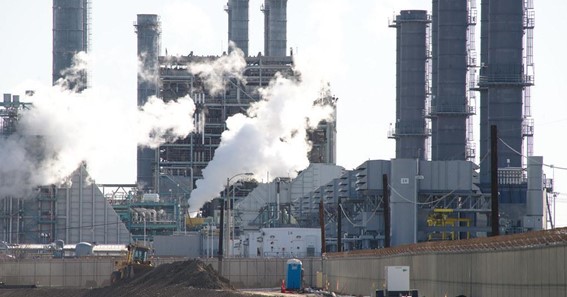Natural Gas
A fossil fuel that develops somewhere deep within the earth’s crust is natural gas. Diatoms and other plant and animal remains, which often included sand, silt, and calcium Carbonate grew on the ocean bottom and the surface of the earth in thick layers over a period of millions to tens of millions of years. These layers were eventually covered beneath a rock, silt, and sand. This substance, which was rich in carbon and hydrogen, underwent pressure and heat transformations that resulted in coal, petroleum, and natural gas.
Numerous distinct chemicals can be found in natural gas. Methane, which is a molecule with one atom of carbon and four atoms of hydrogen, makes up the majority of natural gas (CH4). In lower levels, natural gas also contains non-hydrocarbon gasses, including carbon dioxide and water vapor as well as natural gas liquids (NGLs), which are also hydrocarbon gas liquids. Natural gas is used as a fuel, to create materials, and to create chemicals.
Mineral Rights on a Property
Do you know who owns the mineral rights to your property?
Ground rights or mineral rights may be held by landowners. However, it is not unusual for a landowner to hold title to anything above ground but not to any fluid or sedentary minerals that are present below. For instance, minerals, natural gas, and oil.
The land and mineral rights to a property or parcel of land may be owned by the property owner in the United States, in contrast to many other nations, unless the mineral rights are transferred to a third party.
If a person holds combined surface and mineral rights, they may trade their mineral rights but keep their surface rights. As a result, the current buyer of the mineral rights will become entitled to explore and utilize any underground mineral deposits.
Find Natural Gas on Your Property
You might be able to sell the natural gas you find on your property for a healthy profit if you’re fortunate enough to do so. The methods listed below are ones you can use to locate natural gas on your property:
-
Surface Conditions
By examining the state of the ground soil and the plant life, you might be able to identify the availability of natural gas on any land. The unexpected drying out or withering off of grass and other flora may point to the presence of natural gas below the surface, according to alliantenergy.com. However, rather than being a result of a natural deposit, this usually is caused by a broken pipe. A natural deposit of coalbed methane, a natural gas entrapped between layers of coal deposits, could be present on your property, if there are significant amounts of coal in the soil.
-
Sound Waves
Sending sound waves through the earth and recording their return to the top is a more scientific method of assessing the presence of natural gas on your land. You can produce these waves, according to need.org, by dumping a heavy object onto your land or by using small, controlled explosions. Of course, before conducting any of these tests, you should consult a geologist or other certified expert.
-
Odor
Taste and odor are absent from natural gas. Alliantenergy.com claims this because when natural gas is pumped into a residence, an odorant called mercaptan is added to make leaks easier to see. Therefore, if your property starts to smell like rotten eggs, it’s more likely a leaky pipe than a natural gas deposit.
-
Gravity
According to need.org, a geologist could also be capable of assisting you in finding natural gas on your land by detecting the gravitational attraction of the underneath-ground structures. Making pendulum measurements, in which you gauge the gravitational acceleration in some kind of a specific region by observing the movement of a pendulum, is one method for doing this.
-
Adjacent Deposits
Geology.com claims that natural gas can infiltrate through minute cracks in the mineral and rock layers below the surface 1. It can traverse significant underground distances by this mechanism, even across property lines. Therefore, there is a higher chance that natural gas is beneath your land if the landowner of a nearby or other nearby property has “hit” it. However, as the aforementioned source notes, you should take quick action as it is possible for neighbors to “steal” the gas out from under your boots.
By renting out their land to gas corporations for drilling and exploration, many landowners are making large profits. You may have received a visit from a landman or representative of a gas business seeking you to sign a lease agreement allowing the exploration or drilling of natural gas on your property. How do you make decisions? You can only decide wisely for your land and family when you are aware of the gas exploring and leasing process. But it’s difficult to find trustworthy, unbiased information regarding gas resources and leasing because it’s typically well-guarded to prevent rival enterprises from messing with one another’s plans for gas development.







